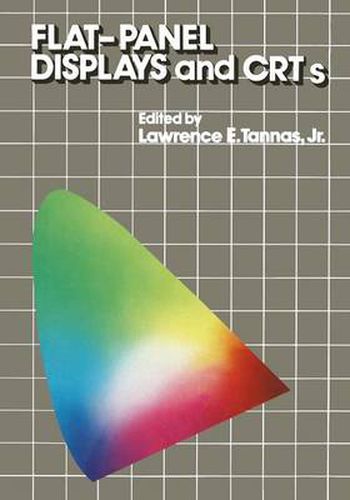Readings Newsletter
Become a Readings Member to make your shopping experience even easier.
Sign in or sign up for free!
You’re not far away from qualifying for FREE standard shipping within Australia
You’ve qualified for FREE standard shipping within Australia
The cart is loading…






This title is printed to order. This book may have been self-published. If so, we cannot guarantee the quality of the content. In the main most books will have gone through the editing process however some may not. We therefore suggest that you be aware of this before ordering this book. If in doubt check either the author or publisher’s details as we are unable to accept any returns unless they are faulty. Please contact us if you have any questions.
Flat-Panel Displays and CRTs, a review of electronic information display devices, is the first sys tematic and comprehensive coverage of the subject. It is intended to distill our wealth of knowledge of flat-panel displays and CRTs from their beginnings to the present state of the art. Historical perspective, theory of operation, and specific applications are all thoroughly covered. The field of display engineering is a multidisciplined technical pursuit with the result that its individual disciplines suffer from a lack of communications and limited perspective. Many previ ously developed standards for, and general understanding of, one technology are often inappro priate for another. Care has been taken here to document the old, incorporate the new, and emphasize commonalities. Criteria for performance have been standardized to enable an expert in one display technology, such as liquid crystals, to compare his device performance with that offered by another technology, such as electroluminescence. This book has been written with a second purpose in mind, to wit, to be the vehicle by means of which a new scientist or engineer can be introduced into the display society. It is organized to be tutorial for use in instructional situations. The first chapters begin with first principles and defini tions; the middle chapters set out requirements and criteria; and the last chapters give a complete description of each major technology.
$9.00 standard shipping within Australia
FREE standard shipping within Australia for orders over $100.00
Express & International shipping calculated at checkout
This title is printed to order. This book may have been self-published. If so, we cannot guarantee the quality of the content. In the main most books will have gone through the editing process however some may not. We therefore suggest that you be aware of this before ordering this book. If in doubt check either the author or publisher’s details as we are unable to accept any returns unless they are faulty. Please contact us if you have any questions.
Flat-Panel Displays and CRTs, a review of electronic information display devices, is the first sys tematic and comprehensive coverage of the subject. It is intended to distill our wealth of knowledge of flat-panel displays and CRTs from their beginnings to the present state of the art. Historical perspective, theory of operation, and specific applications are all thoroughly covered. The field of display engineering is a multidisciplined technical pursuit with the result that its individual disciplines suffer from a lack of communications and limited perspective. Many previ ously developed standards for, and general understanding of, one technology are often inappro priate for another. Care has been taken here to document the old, incorporate the new, and emphasize commonalities. Criteria for performance have been standardized to enable an expert in one display technology, such as liquid crystals, to compare his device performance with that offered by another technology, such as electroluminescence. This book has been written with a second purpose in mind, to wit, to be the vehicle by means of which a new scientist or engineer can be introduced into the display society. It is organized to be tutorial for use in instructional situations. The first chapters begin with first principles and defini tions; the middle chapters set out requirements and criteria; and the last chapters give a complete description of each major technology.